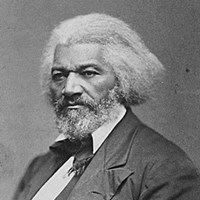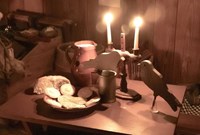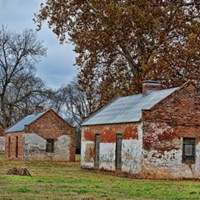- Lesson Plan (18)
- Field Trips (2)
- Traveling Trunk (2)
- Online Galleries (1)
- Primary Sources (1)
- Student Activities (1)
- Cane River Creole National Historical Park (2)
- Chaco Culture National Historical Park (2)
- Mesa Verde National Park (2)
- Ninety Six National Historic Site (2)
- Aztec Ruins National Monument (1)
- Canyon de Chelly National Monument (1)
- Fort Donelson National Battlefield (1)
- Fort Frederica National Monument (1)
- Fort Stanwix National Monument (1)
- Show More ...
- Social Studies (19)
- Science (15)
- Literacy and Language Arts (5)
- Math (1)
Showing 23 results for enrich ...
Eco-enrichers
American Revolution Soldier
Natural History Collection at FODO
George Washington Carver - An Original Conservationist: Sharing the Soil
- Type: Lesson Plan
- Grade Levels: High School: Ninth Grade through Twelfth Grade
For this activity students will create a brochure for farmers. The brochure will describe the needs each crop has (soil type, weather, etc.), the impact of the crop on the soil and the different ways the crop can be used. Students will focus on cotton, tobacco, peanuts, soybeans and sweet potatoes. The goal is for students to understand the impact cash crops may have on soil quality and how farmers can replenish their soil through crop rotation.
Louisiana Life
- Type: Lesson Plan
- Grade Levels: Upper Elementary: Third Grade through Fifth Grade
- Type: Lesson Plan
- Grade Levels: Middle School: Sixth Grade through Eighth Grade
Lives of Backcountry Children Traveling Trunk
- Type: Traveling Trunk
- Grade Levels: Lower Elementary: Pre-Kindergarten through Second Grade
The Lives of Backcountry Children trunk is designed to enrich your students' studies of the daily life of frontier boys and girls in the 18th century. Along with a variety of artifacts the trunk also includes various lessons and activities. Just a few examples of lesions and activities included are Colonial Clothing, Colonial Children’s Chores, and Colonial Games and Music.
Telling the Stories of Pu'uhonua o Hōnaunau
- Type: Lesson Plan
- Grade Levels: Middle School: Sixth Grade through Eighth Grade
Pu'uhonua o Hōnaunau contains many stories of past and present Hawaiian peoples. This lesson couples 3D virtual tours with oral histories, archeological data, and historical information to reveal and explore these narratives. Este plan de clase con actividades incluido también está disponible en español.
Frederick Douglass, The Educator of Anacostia: “Once you learn to read, you will be forever free.”
- Type: Lesson Plan
- Grade Levels: Middle School: Sixth Grade through Eighth Grade
Students will learn about Frederick Douglass’s passion for learning and sharing knowledge with the African-American community. They will use 3D printed replicas to practice skills in primary source research, critical thinking, discussion, and writing. Este plan de clase con actividades incluido también está disponible en español.
- Type: Lesson Plan
- Grade Levels: Middle School: Sixth Grade through Eighth Grade
Students will learn about the challenges that 19th- and 20th-century women faced when choosing a career path. They will then read a biography of Florence Hawley Ellis, one of the earliest American women to break into the male-dominated field of archeology. Este plan de clase con actividades incluido también está disponible en español.
- Type: Lesson Plan
- Grade Levels: Middle School: Sixth Grade through Eighth Grade
Ann Axtell was a prominent archeologist, artist, and author. Ann spent much of her time recording and painting architecture, petroglyphs and pictographs, landscapes, and expedition work. Many of her recording methods are still in use today by modern archeologists. Este plan de clase con actividades incluido también está disponible en español.
Scouts and Shovels: “Crashing the Gates” with Bertha Dutton
- Type: Lesson Plan
- Grade Levels: Middle School: Sixth Grade through Eighth Grade
Bertha Dutton was one of the first female archeologists who worked with the National Park Service. This lesson plan emphasizes her original methodologies and why her work was so important to both women’s history and cultural resource preservation. Este plan de clase con actividades incluido también está disponible en español.
Holiday Treasures — Field Trip Lesson Plans
- Type: Lesson Plan
- Grade Levels: Upper Elementary: Third Grade through Fifth Grade
People of many different cultures lived at and around the historic Fort Stanwix. During a Holiday Treasures field trip, your class will become world travelers and meet them as they adventure around the fort. To ensure your the onsite program provides the most enriching experience possible, the park has provided this pre-visit lesson and resource materials for your use in the classroom.
What Did They Eat?: Archeology and Animal Bones
- Type: Lesson Plan
- Grade Levels: Middle School: Sixth Grade through Eighth Grade
This lesson illustrates how archaeologists use faunal analysis, or the study of animal bones, to explore what people in the past ate and how they obtained their food. By applying concepts of taxonomy and scientific classification, it demonstrates how archaeologists use both scientific methods and historical research to interpret past lifeways. Este plan de clase con actividades incluido también está disponible en español.
"Temperature, Clouds and Sun is Weather - Oh, My!"
- Type: Lesson Plan
- Grade Levels: Lower Elementary: Pre-Kindergarten through Second Grade
The program consists of videos, hands-on projects, and observation-based activites. The participant will: Create a cloud headband. Learn about the job of a Meteorologist. Predict tomorrow’s weather. Learn about Martin Van Buren’s year without a Summer. Conduct an experiment to create a cloud in a jar and document the type of cloud by comparing it to a cloud chart. Enjoy some En Plein Air drawing or painting of cloud formations.
- Type: Lesson Plan
- Grade Levels: Lower Elementary: Pre-Kindergarten through Second Grade
The program consists of videos, hands-on projects, and observation-based activites. The participant will: Create a cloud headband. Learn about the job of a Meteorologist. Predict tomorrow’s weather. Learn about Martin Van Buren’s year without a Summer. Conduct an experiment to create a cloud in a jar and document the type of cloud by comparing it to a cloud chart. Enjoy some En Plein Air drawing or painting of cloud formations.
Fallen Soldiers (Formerly Called Unfinished Work: The Creation and Dedication of the Soldiers' National Cemetery)
- Type: Field Trips ... Primary Sources ... Student Activities
- Grade Levels: High School: Ninth Grade through Twelfth Grade
The Gettysburg National Military Park is pleased to provide you and your students with our student education program materials on Fallen Soldiers (Formerly called "Unfinished Work: The Creation and Dedication of the Soldiers' National Cemetery"). Hopefully it will enrich your studies of Abraham Lincoln and the American Civil War, providing you and your students with added insights into this American tragedy and triumph. This program is targeted at students in grades 8-12.
Canoemobile
- Type: Field Trips
- Grade Levels: Upper Elementary: Third Grade through Fifth Grade
K - 12! A “floating classroom” that brings students out on the Mississippi River in 24-foot Voyageur canoes that is combined with enriched land-based learning activities, guided day trips, and overnight camping. Canoemobile brings classroom learning outside, engaging youth to improve school performance, cultivate a stewardship ethic, and create pathways to pursue educational and career opportunities in the outdoors. We are proud to support this partnership program.
Neither Cold Nor A Harbor: Archeology and a Civil War Soldier’s Experience at the Battle of Cold Harbor
- Type: Lesson Plan
- Grade Levels: Middle School: Sixth Grade through Eighth Grade
In June of 1864, the soldiers at Cold Harbor had to make use of the limited resources they had to survive. They used repurposed materials and their own hands to dig trenches and earthenwork mounds that would protect them from gunfire and mortar shells. This lesson plan combines artifact and map inquiry to learn about the Civil War landscape. Este plan de clase con actividades incluido también está disponible en español.
Atomic Elements and Archeology: Tracing Ancient Resource Access and Trade Routes Using XRF
- Type: Lesson Plan
- Grade Levels: Middle School: Sixth Grade through Eighth Grade
X-ray fluorescence (XRF) is one scientific tool archeologists use to study the chemical composition of artifacts found on a site. This lesson plan illustrates the method behind XRF and describes how the resulting data can illustrate where and how ancient peoples obtained resources, whether through local sources or trade. Este plan de clase con actividades incluido también está disponible en español.




















